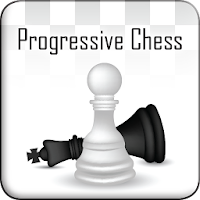AMD Radeon RX 9070 Review
The AMD Radeon RX 9070 enters the graphics card market at an interesting juncture. Hot on the heels of Nvidia's latest generation, this $549 card finds itself directly competing with the underwhelming GeForce RTX 5070. In this matchup, AMD emerges victorious, making the RX 9070 a compelling choice for 1440p gaming.
However, the picture isn't entirely straightforward. AMD's own Radeon RX 9070 XT, only $50 more expensive, presents a tough competitor. While the price difference aligns with the RX 9070's roughly 8% lower performance, the incremental cost for significantly better performance is difficult to ignore. Nevertheless, the choice between these two AMD cards remains a positive one for consumers.
Purchasing Guide
The AMD Radeon RX 9070 launches March 6th, with a starting price of $549. Expect variations in pricing across different models. To maximize value, prioritize models closest to this starting price, especially given its proximity to the RX 9070 XT.
AMD Radeon RX 9070 – Photos
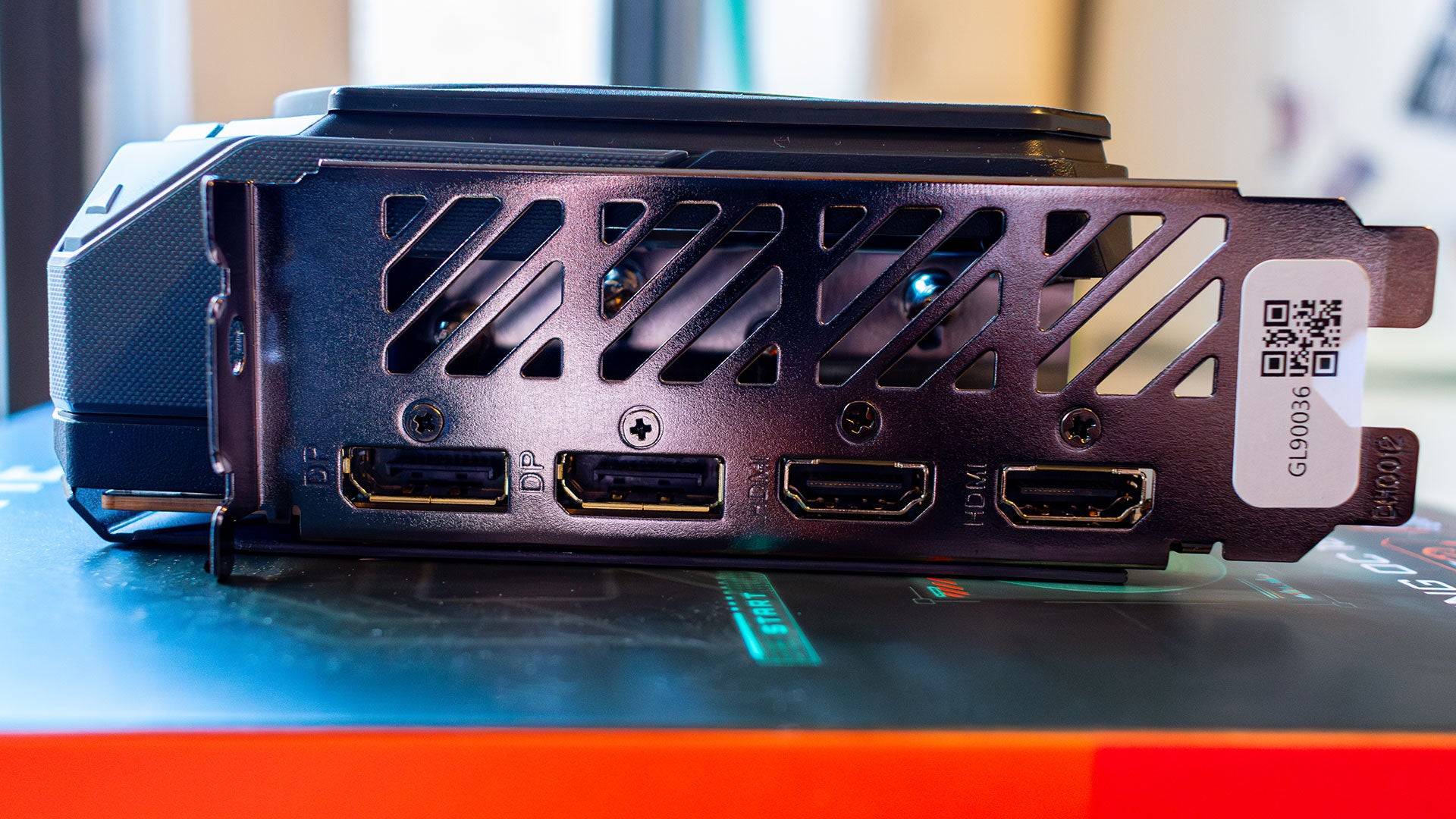
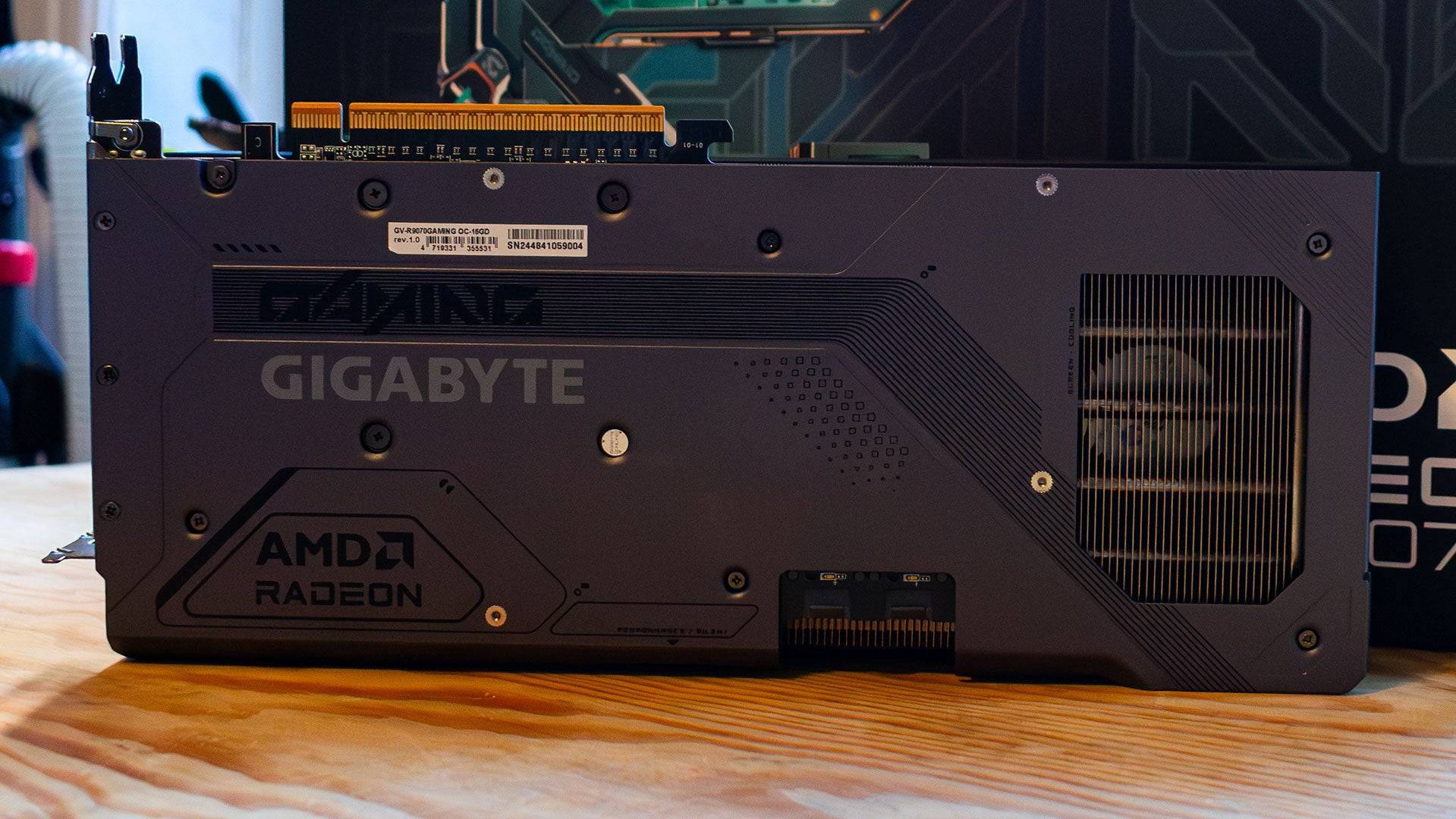 4 Images
4 Images
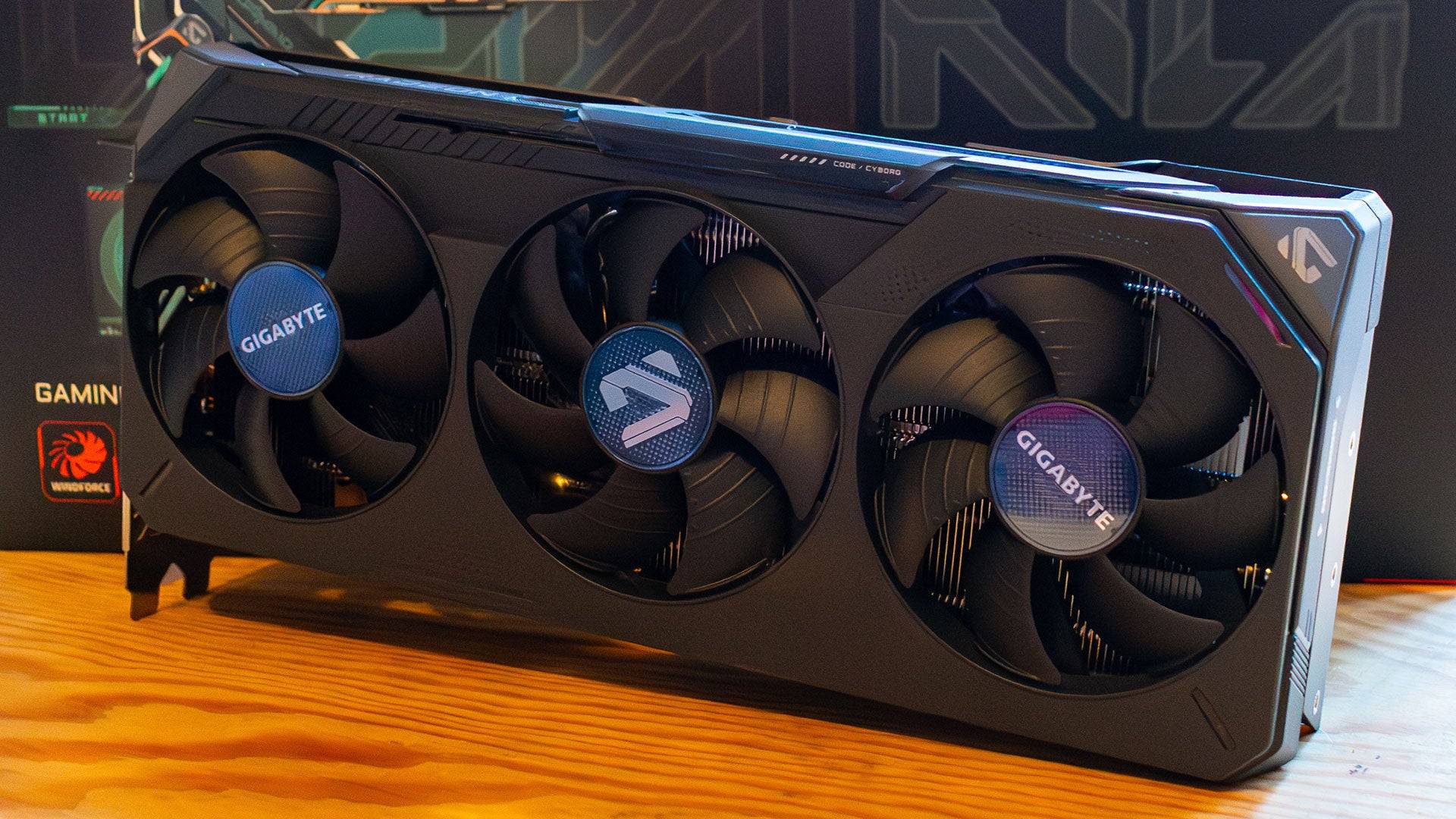
Specs and Features
Like its sibling, the RX 9070 XT, the RX 9070 utilizes the new RDNA 4 architecture. This results in substantial performance gains, significantly outpacing the previous generation Radeon RX 7900 GRE despite possessing 30% fewer compute units.
The RX 9070 boasts 56 Compute Units, each featuring 64 Streaming Multiprocessors (SMs), totaling 3,584 shaders. Each compute unit includes one Ray Accelerator and two AI Accelerators, for a total of 56 and 112 respectively. These improvements, particularly to ray tracing and AI acceleration, allow the card to compete effectively in ray-traced games. Furthermore, the enhanced AI Accelerators enable FidelityFX Super Resolution (FSR) 4, marking AMD's debut in AI upscaling.
The RX 9070 pairs 16GB of GDDR6 VRAM with a 256-bit bus—a configuration similar to the 7900 GRE, sufficient for 1440p gaming for years to come. While GDDR7 adoption would have been beneficial, it likely would have increased the price.
AMD suggests a 550W power supply, citing a 220W power budget. However, testing revealed peak consumption of 249W. While not necessitating enhanced cooling, a 600W PSU is recommended for safety.
Importantly, unlike previous generations, AMD isn't releasing a reference design for the RX 9070. All versions will be from third-party manufacturers. This review utilized the Gigabyte Radeon RX 9070 Gaming OC 16G, a triple-slot card with a factory overclock.

FSR 4
Since DLSS's rise in 2018, AI upscaling has become a key performance enhancer without significant image quality loss. Previously an Nvidia-exclusive feature, FSR 4 brings this capability to AMD GPUs.
FSR 4 uses previous frames and in-game data, processed by an AI model, to upscale lower-resolution images to the native resolution. This differs from FSR 3's temporal upscaling, lacking an AI algorithm for detail refinement, potentially leading to artifacts.
The AI processing introduces a minor performance penalty compared to FSR 3. For example, in Call of Duty: Black Ops 6 at 1440p (Extreme preset), FSR 3 yielded 165 fps, dropping to 159 fps with FSR 4. Similar results were observed in Monster Hunter World.
An Adrenalin software toggle allows users to choose between FSR 3's performance advantage and FSR 4's improved image quality. The preference will depend on individual gaming priorities.
AMD Radeon RX 9070 XT & 9070 – Benchmarks
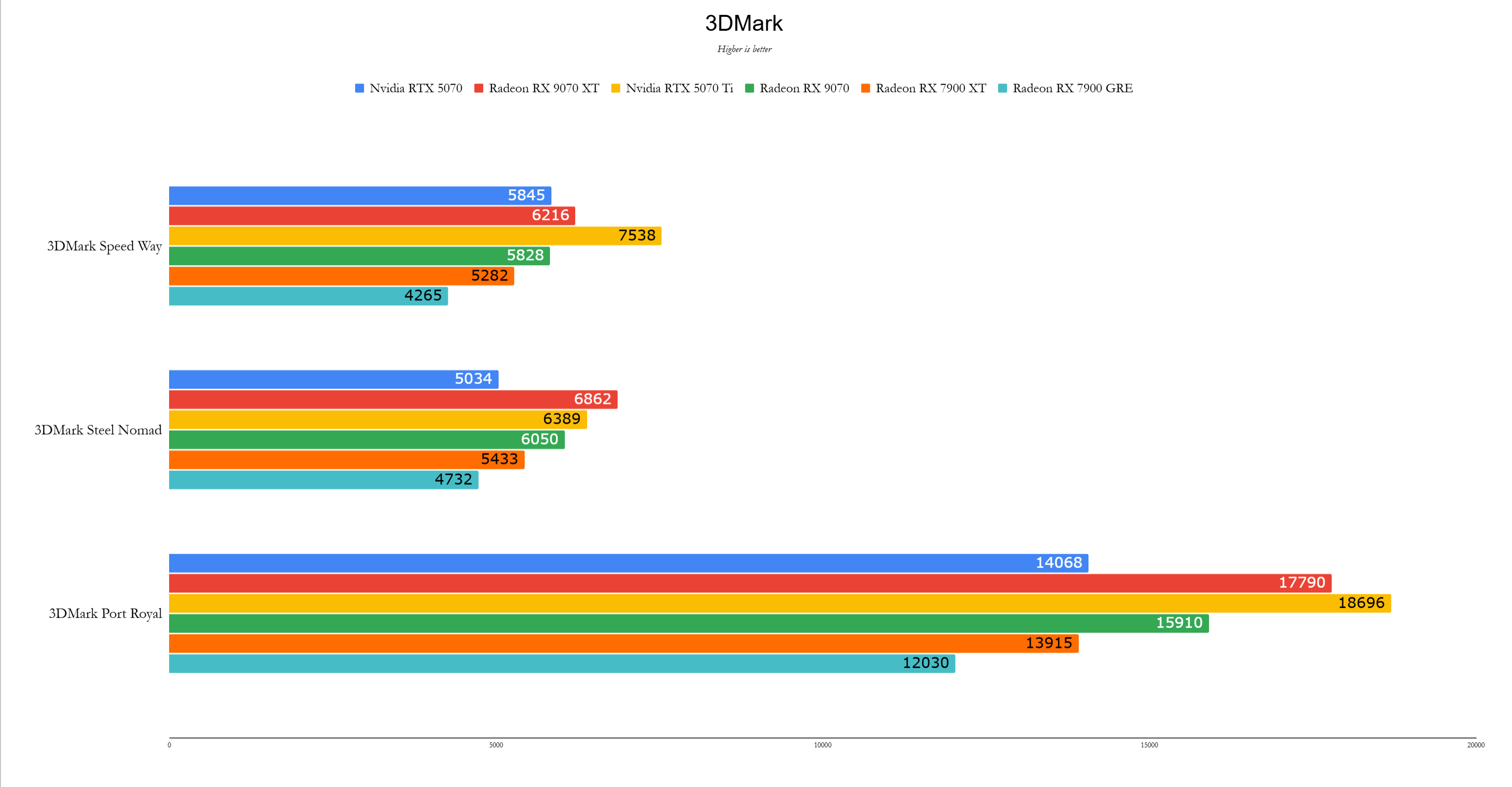
 11 Images
11 Images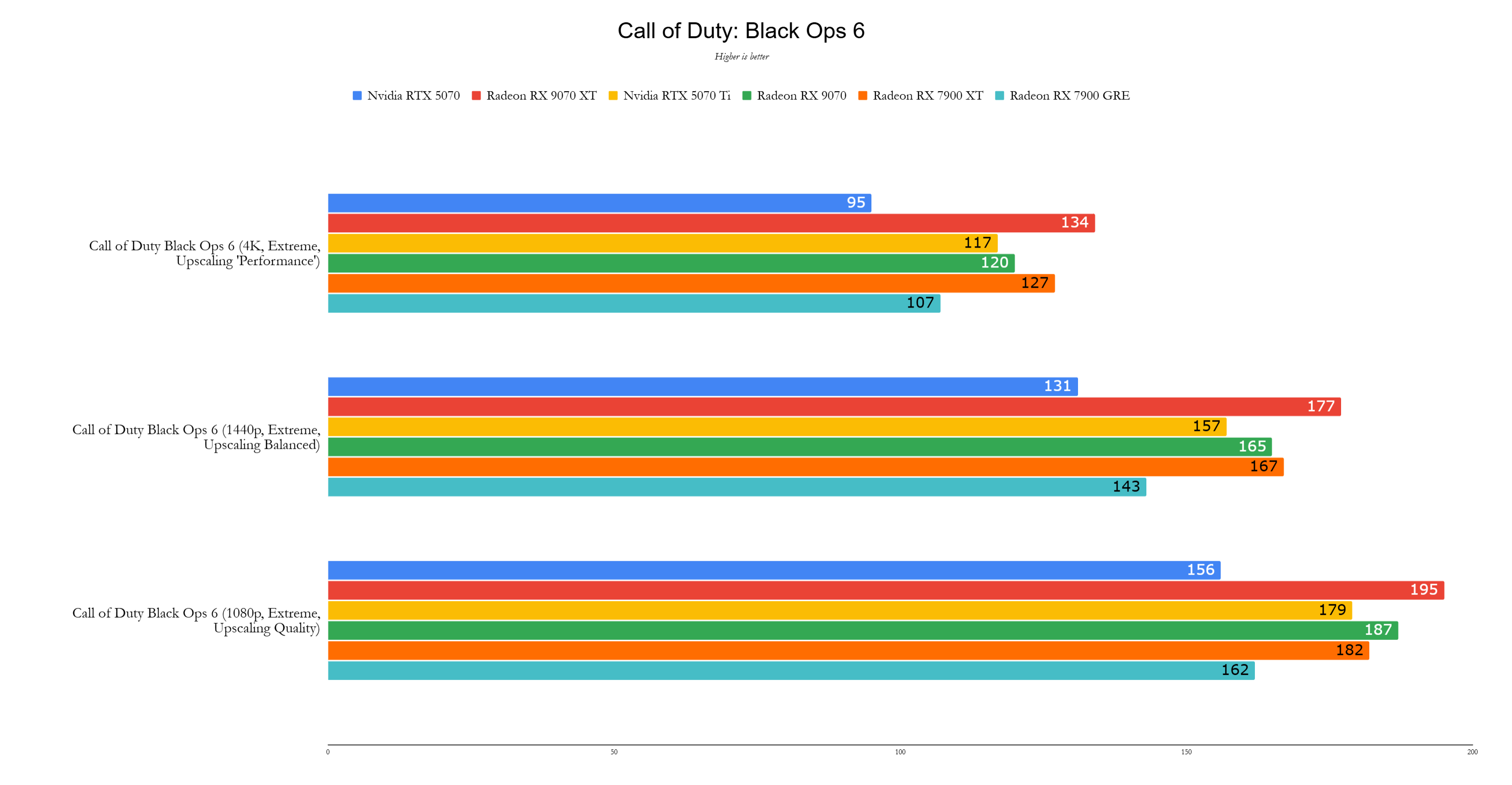
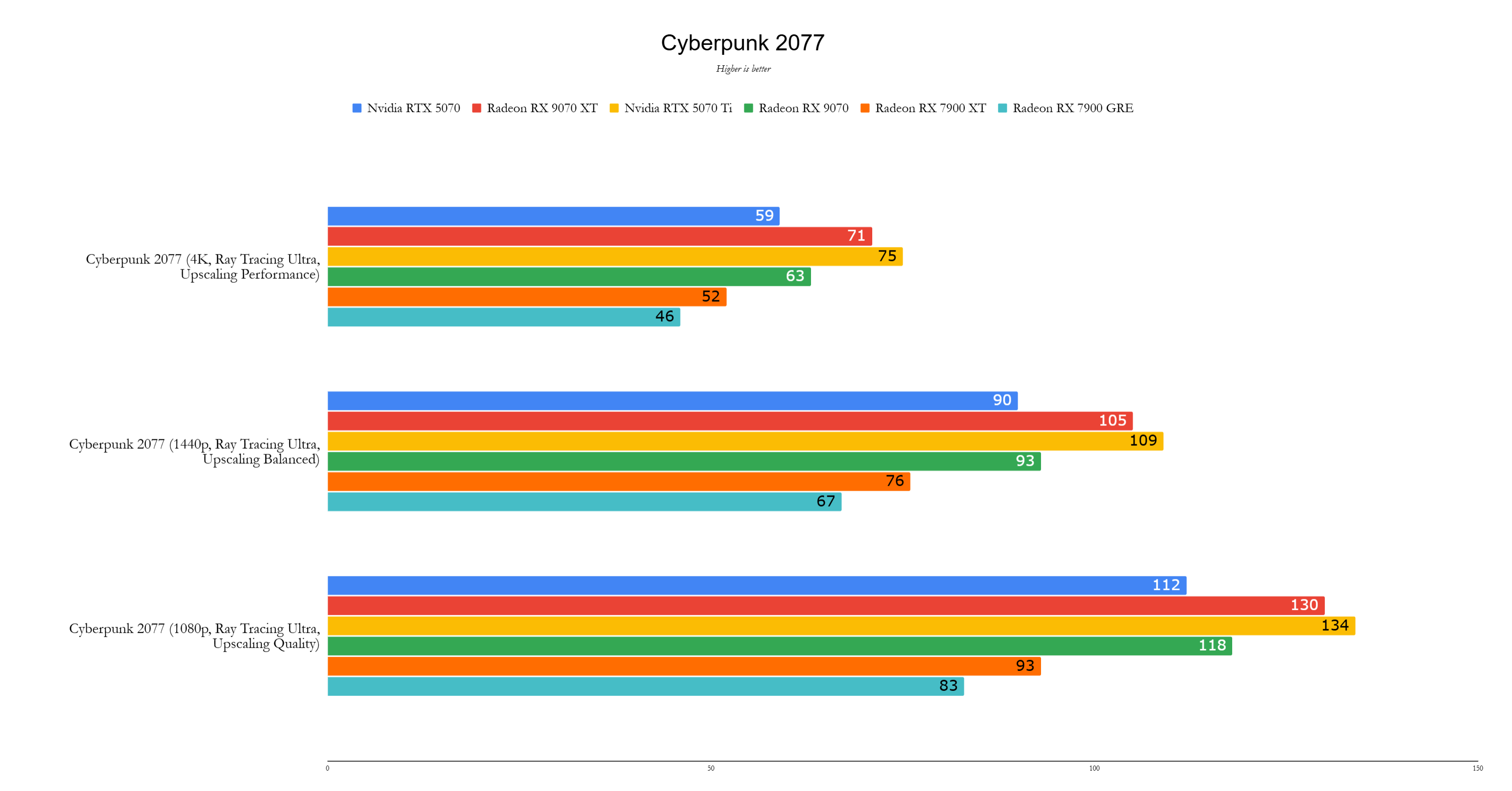
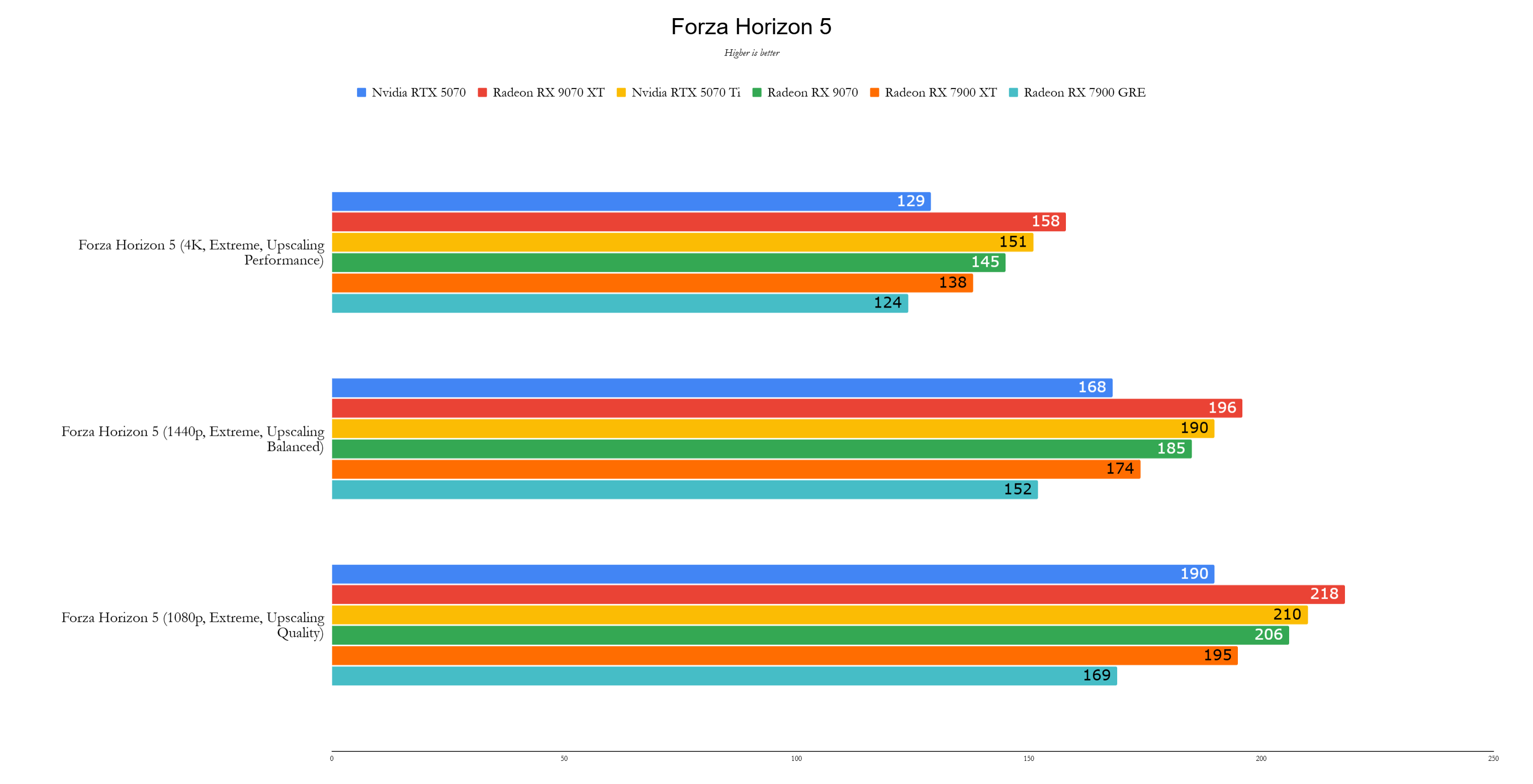
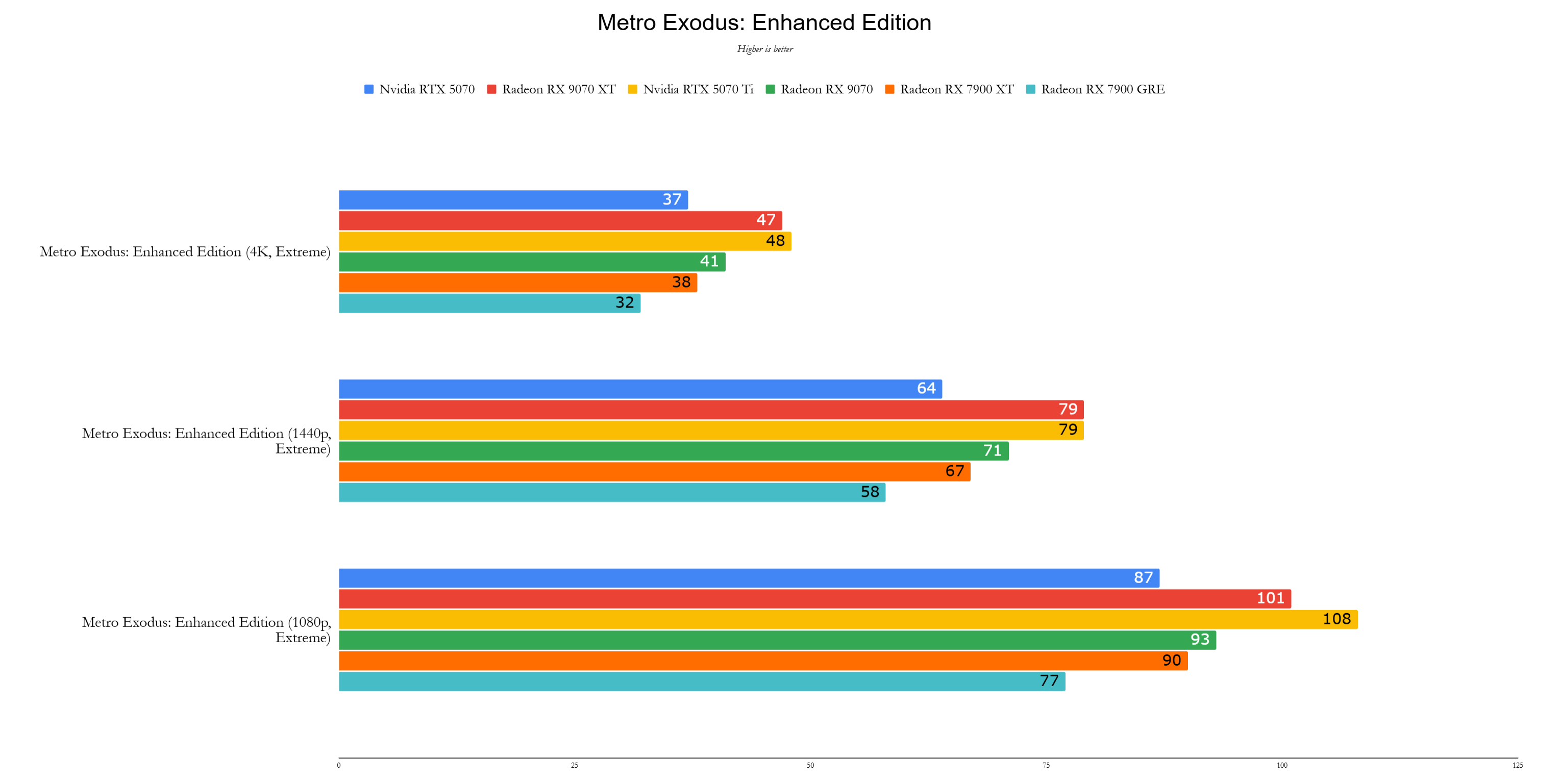
Performance
Priced at $549, the RX 9070 directly competes with the RTX 5070, often surpassing it. At 1440p, it's on average 12% faster and 22% faster than the RX 7900 GRE (also launched at $549 in 2024), a remarkable improvement considering its 30% fewer cores.
Note that this review used a factory-overclocked RX 9070 (Gigabyte Radeon RX 9070 Gaming OC). GPU-Z reported a boost clock of 2700MHz (approximately 7% higher), likely contributing to a 4-5% performance increase.
Testing used public drivers (Nvidia Game Ready driver 572.60, AMD Adrenalin 24.12.1, and review drivers provided by AMD and Nvidia for their respective cards).
3DMark benchmarks, indicative of potential performance, showed a near-tie with the RTX 5070 in Speed Way (ray tracing enabled), but a 20% lead in Steel Nomad (no ray tracing).
In Call of Duty: Black Ops 6 (1440p, FSR 3 Balanced), the RX 9070 achieved 165 fps, compared to 131 fps for the RTX 5070 and 143 fps for the 7900 GRE.
Cyberpunk 2077 (1440p, Ray Tracing Ultra) surprisingly showed a 3% advantage for the RX 9070.
Metro Exodus (no upscaling) resulted in an 11% lead for the RX 9070.
Red Dead Redemption 2 (1440p, max settings, Vulkan) showed a 23% advantage for the RX 9070.
Total War: Warhammer 3 showed a significant lead at 4K, but a negligible difference at 1440p.
Assassin's Creed Mirage (1440p, Ultra preset, FSR Balanced) resulted in an 18% lead for the RX 9070.
Black Myth: Wukong (1440p, Cinematic preset) showed a near tie.
Forza Horizon 5 (1440p) showed a 12% and 25% lead over the RTX 5070 and 7900 GRE, respectively.
The RX 9070's performance advantage over the RTX 5070 at the same price point is impressive. Its 16GB of VRAM also contributes to better long-term value. Even with a hypothetical performance tie, the superior VRAM would make the RX 9070 the more worthwhile purchase. Combined with its actual performance advantage, the RX 9070 is a compelling choice.
-
AMD Radeon RX 9060 XT Confirmed: Details Revealed
May 23,2025 -
AMD Ryzen 7 9800X3D: Top Gaming CPU Now Back in Stock at Amazon
May 21,2025 -
AMD Ryzen 9 9950X3D: Performance Unveiled
May 06,2025 -
AMD Radeon RX 9070 XT: Performance Unveiled
Apr 11,2025 -
AMD Zen 5 Gaming CPUs Restocked: 9950X3D, 9900X3D, 9800X3D Available Now
May 13,2025 -
Best Buy Launches Prebuilt Gaming PCs with New AMD Radeon RX 9070 and 9070 XT
Mar 25,2025 -
Best Deals on AMD Radeon RX 9070 and 9070 XT Graphics Cards
Mar 27,2025 -
The Powerful AMD Zen 5 9950X3D, 9900X3D, and 9800X3D Gaming CPUs Are Now Available
Mar 26,2025 -
Amazon Just Dropped the Price on This AMD Radeon RX 9070 XT Prebuilt Gaming PC
Mar 28,2025 -
The Best Deals Today: PS Portal, PS5 DualSense Controllers, New AMD Ryzen X3D CPUs, New iPad Air
Mar 21,2025
-
1
![Roblox Forsaken Characters Tier List [UPDATED] (2025)](https://imgs.ksjha.com/uploads/18/17380116246797f3e8a8a39.jpg)
Roblox Forsaken Characters Tier List [UPDATED] (2025)
Mar 17,2025
-
2

Roblox UGC Limited Codes Unveiled for January 2025
Jan 06,2025
-
3

Stardew Valley: A Complete Guide To Enchantments & Weapon Forging
Jan 07,2025
-
4

Pokémon TCG Pocket: Troubleshooting Error 102 Resolved
Jan 08,2025
-
5

Free Fire Characters 2025: Ultimate Guide
Feb 20,2025
-
6
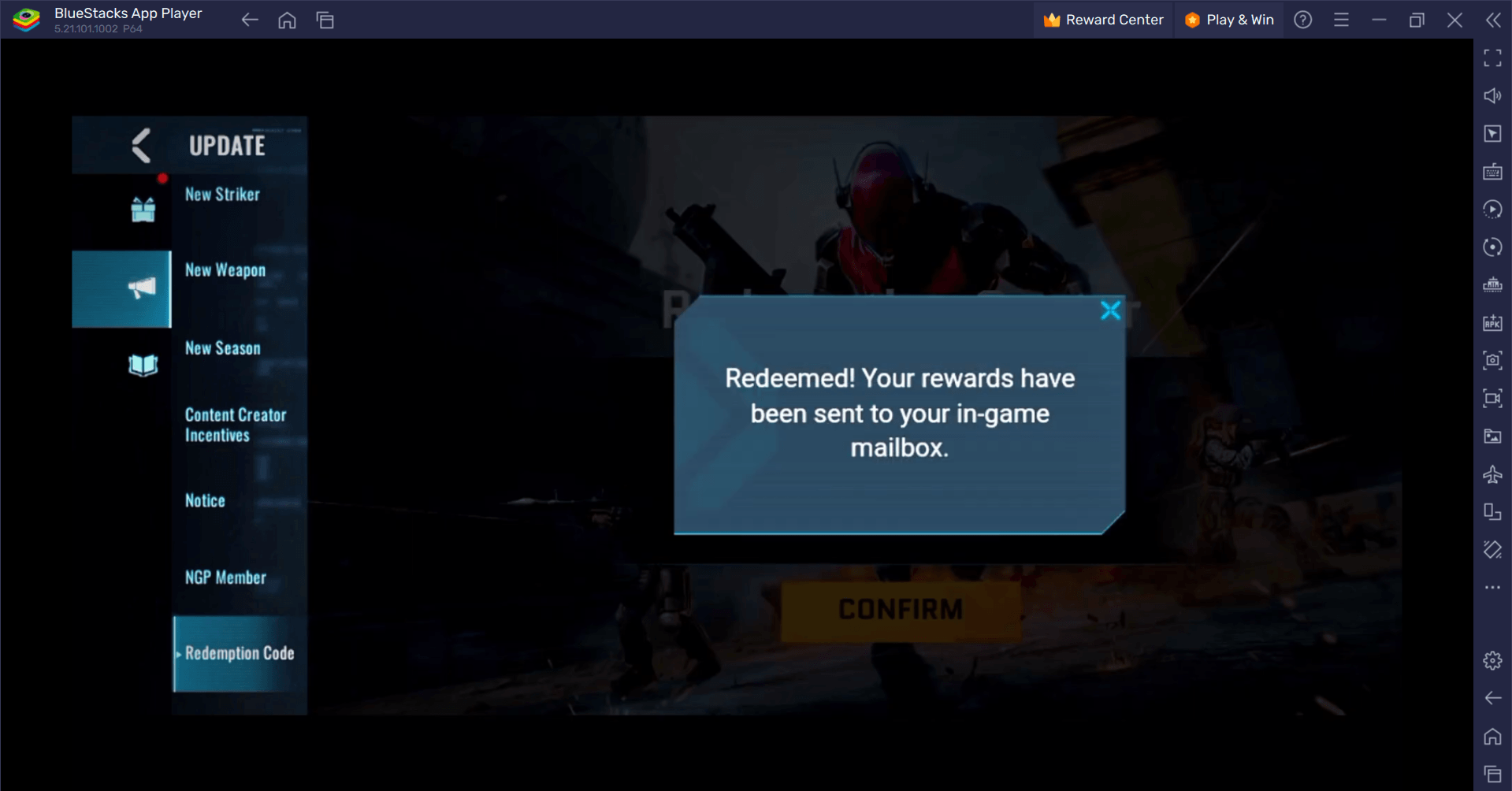
Blood Strike - All Working Redeem Codes January 2025
Jan 08,2025
-
7

Blue Archive Unveils Cyber New Year March Event
Dec 19,2024
-
8
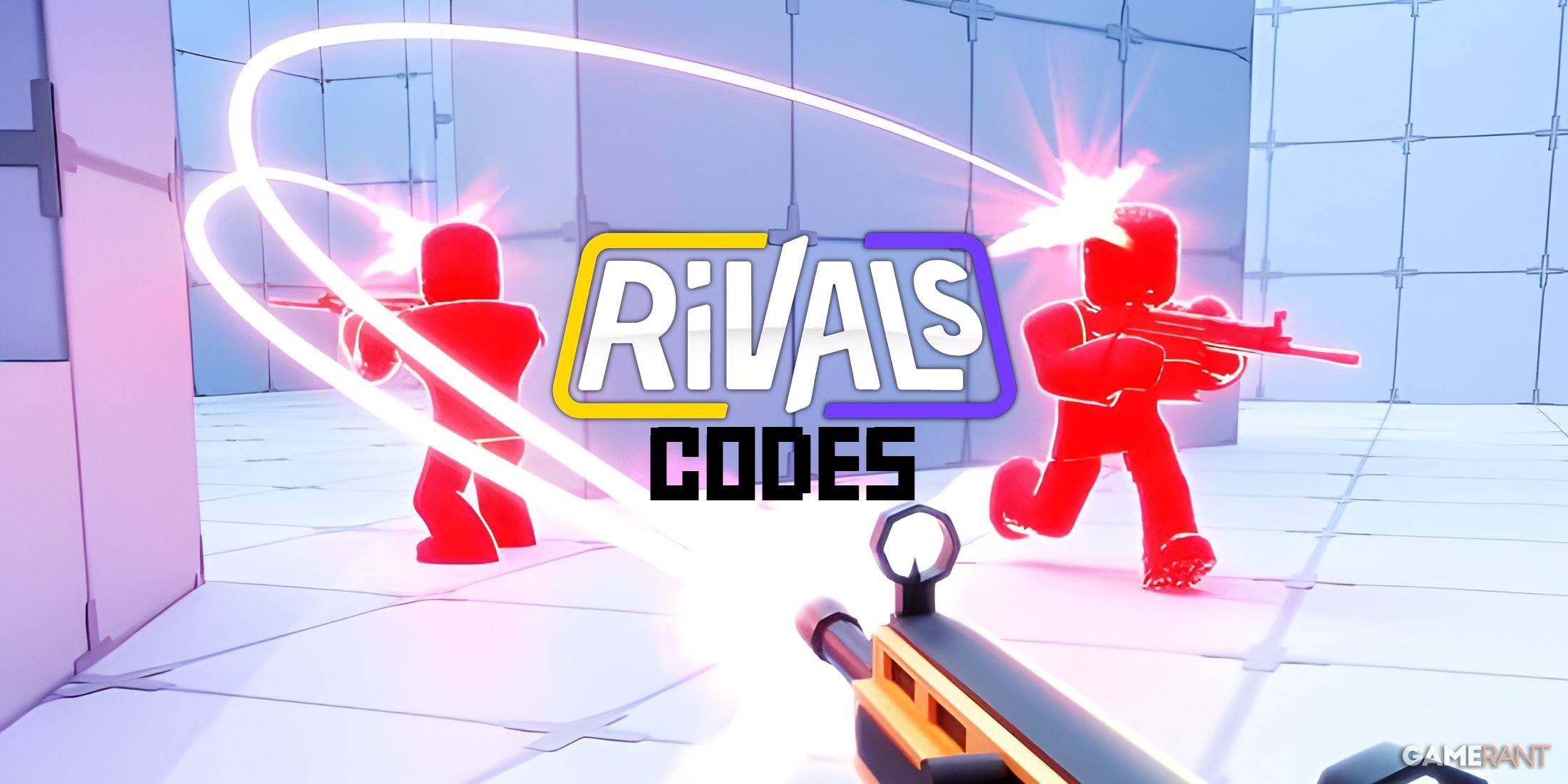
Roblox: RIVALS Codes (January 2025)
Jan 07,2025
-
9

Cyber Quest: Engage in Captivating Card Battles on Android
Dec 19,2024
-
10

Delta Force: A Complete Guide to All Campaign Missions
Apr 09,2025
-
Download

A Simple Life with My Unobtrusive Sister
Casual / 392.30M
Update: Mar 27,2025
-
Download

Random fap scene
Casual / 20.10M
Update: Dec 26,2024
-
Download
![Corrupting the Universe [v3.0]](https://imgs.ksjha.com/uploads/66/1719514653667db61d741e9.jpg)
Corrupting the Universe [v3.0]
Casual / 486.00M
Update: Dec 17,2024
-
4
Ben 10 A day with Gwen
-
5
Oniga Town of the Dead
-
6
A Wife And Mother
-
7
Cute Reapers in my Room Android
-
8
Permit Deny
-
9
Utouto Suyasuya
-
10
Roblox













